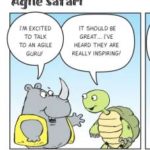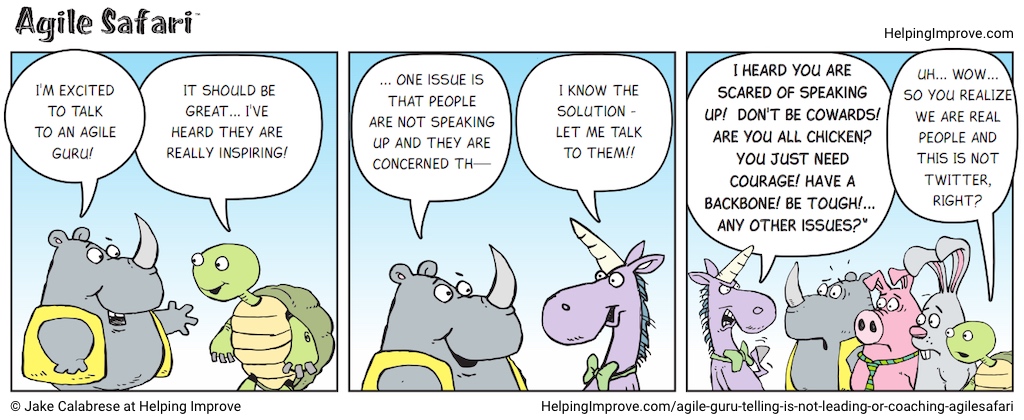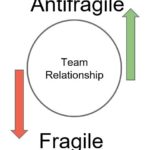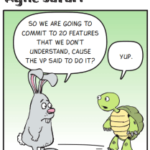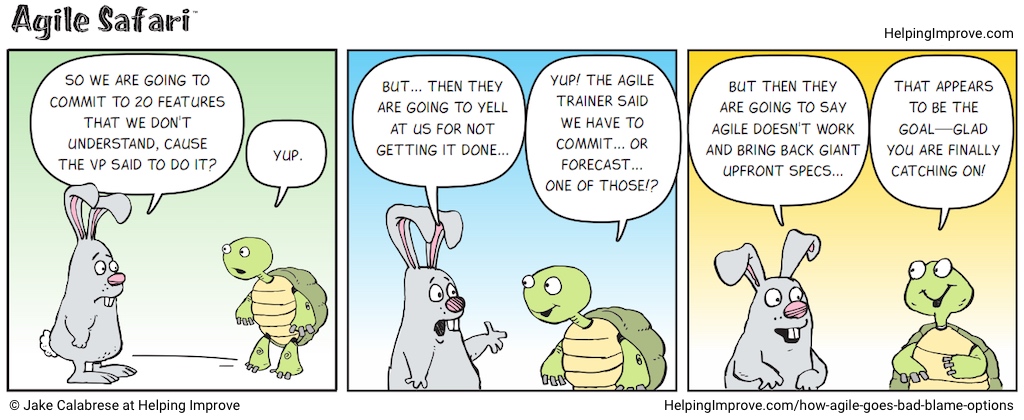A major challenge we run into when helping organizations shift or improve is leadership misconceptions. Agile leadership myths cause a lot of these misconceptions. We need to help avoid falling into the trap of these common myths because they limit our success. A root cause of many of the myths is that people simply don’t know what else to do. For example, Myth #1: ‘telling people “you are empowered” actually works.’ Leaders often don’t know what else to do, other than tell teams they are empowered. We see this with Development Teams, Scrum Teams, Delivery Teams, AND Leadership Teams.
For example, Myth #1: ‘telling people “you are empowered” actually works.’ Leaders often don’t know what else to do, other than tell teams they are empowered. We see this with Development Teams, Scrum Teams, Delivery Teams, AND Leadership Teams.
A bit of background — there are many agile leadership myths out there. These myths (or assumptions) limit leaders ability to improve, help others, and succeed. Many myths seem to occur at a nonconscious level, meaning they function like many biases. People are not even aware, consciously, that they are happening.


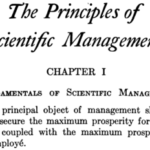


 Two facilitators kick the event off. They explain a light structure for success, a few core principles, and create a fun energy in this large room. They invite anyone in the room (including you) to propose a session on a topic that is of value to them. Simply step up to the microphone and propose a session. You can’t imagine proposing a session, but plenty of other people are. The person sitting next to you stands up and heads over to the mic to propose a session. You notice that blank wall of time slots filling up with a variety of session topics! Next thing you know, you are in line proposing a session! Wait – what happened! As the time to propose sessions is up, there is now a large wall (or marketplace) of sessions to choose from. You decide on a session to attend in the 1st time slot and head over to that session ready to learn and contribute! And still a bit surprised that this worked!
Two facilitators kick the event off. They explain a light structure for success, a few core principles, and create a fun energy in this large room. They invite anyone in the room (including you) to propose a session on a topic that is of value to them. Simply step up to the microphone and propose a session. You can’t imagine proposing a session, but plenty of other people are. The person sitting next to you stands up and heads over to the mic to propose a session. You notice that blank wall of time slots filling up with a variety of session topics! Next thing you know, you are in line proposing a session! Wait – what happened! As the time to propose sessions is up, there is now a large wall (or marketplace) of sessions to choose from. You decide on a session to attend in the 1st time slot and head over to that session ready to learn and contribute! And still a bit surprised that this worked!